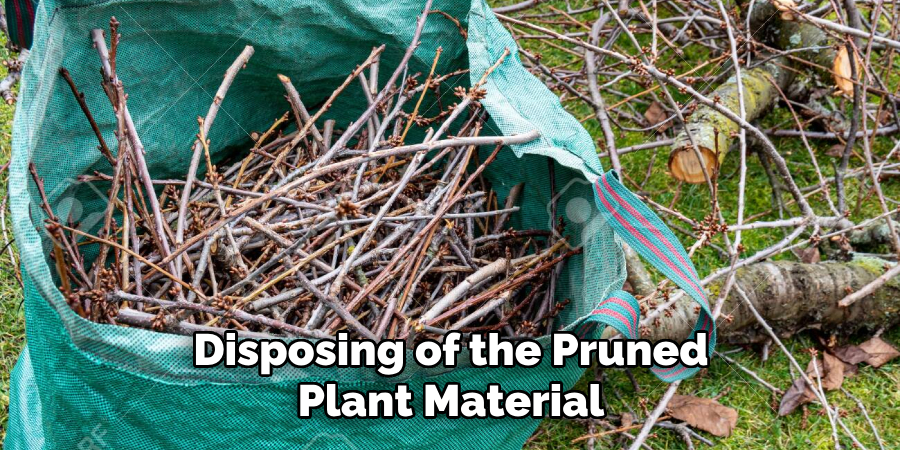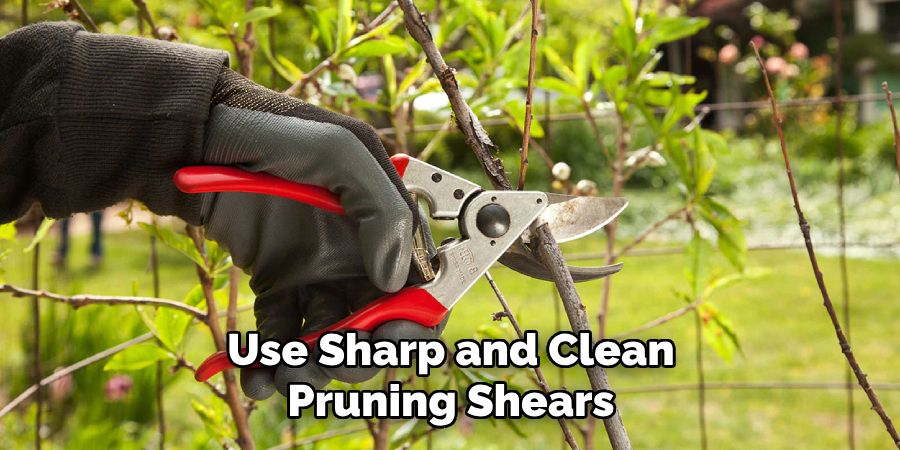To prune marigolds, remove spent flowers and pinch off leggy stems to promote bushy growth. Pruning marigolds helps maintain their shape and encourage more blooms.
In addition to deadheading the flowers, you can also trim back overgrown or straggly branches. However, avoid cutting back too much at once, as it may stress the plants. Pruning should be done regularly throughout the growing season to keep marigolds looking tidy and healthy.
By following these pruning techniques, you can ensure that your marigold plants thrive and continue to add vibrant color to your garden.

Credit: gardenerspath.com
How to Prune Marigolds: Step by Step Guide
Choosing The Right Time For Pruning Marigolds
Pruning marigolds requires careful consideration of the best time of year to do so. The ideal period typically falls in late summer or early fall when the plants have finished blooming. Factors to consider before pruning include the local climate and weather conditions, as well as the overall health and growth of the marigolds.
It is important to assess the plant’s needs and trim accordingly to promote growth and maintain a tidy appearance. By following these guidelines, you can ensure proper pruning practices and support the continued health and vibrancy of your marigold plants.
Preparing Your Tools For Pruning Marigolds
Proper cleaning and maintenance of tools is essential when preparing to prune marigolds. Keeping your tools in good condition helps prevent the spread of diseases and ensures clean cuts. Begin by wiping away any dirt or debris from the tools using a damp cloth.
You can also use a mild detergent if necessary. Next, disinfect the tools by soaking them in a solution of one part bleach to nine parts water for about 10 minutes. Rinse the tools thoroughly and allow them to air dry before using.
Sharpen the blades of pruning shears and scissors with a fine grit sharpening stone. Additionally, lubricate any moving parts with a light machine oil to keep them functioning smoothly. By following these steps, you will have clean and well-maintained tools ready for pruning marigolds.
Steps For Pruning Marigolds
Pruning marigolds is an essential task for maintaining their overall health and promoting optimal growth. Before beginning the pruning process, it is crucial to assess the plant’s overall condition. Look for any signs of disease, such as wilting or discoloration, as well as any dead or broken branches.
Identifying these areas that need pruning will help prevent the spread of disease and encourage new growth. Once you’ve evaluated the marigold plant, carefully trim away any damaged or diseased parts, making clean cuts just above a healthy bud or leaf.
Be sure to use sharp and clean pruning shears to avoid further damage. Additionally, it’s important to remove any overcrowded or crossing branches to improve air circulation and sunlight exposure. Proactively pruning marigolds will help ensure their vibrant and blooming display throughout the growing season.
Pruning Techniques For Marigolds
Pruning marigolds is essential for their growth and overall health. Pinching off spent flowers encourages new blooms. Removing damaged or diseased leaves prevents the spread of diseases. Trimming back overgrown areas maintains the plant’s shape and prevents overcrowding. When pruning marigolds, it’s important to use clean and sharp shears to avoid damaging the plant.
Start by identifying spent flowers and gently pinch them off at the base. Look for any leaves that are damaged or diseased and remove them carefully. If the marigold has become overgrown, trim back the excessive growth to maintain a compact and attractive shape.
Regular pruning will extend the blooming period of marigolds and keep the plant healthy and vibrant throughout the growing season.
Proper Disposal Of Pruned Material
Proper disposal of pruned material is essential when pruning marigolds. Here are some guidelines for disposing of the pruned plant material. One option is to compost the marigold clippings. Composting allows the organic matter to break down naturally and adds valuable nutrients to the soil.

Another option is to place the pruned material in the green waste bin for collection. Make sure to check the guidelines set by your local waste management authorities. Avoid throwing the pruned material in regular trash bins, as it will end up in landfills and contribute to environmental pollution.
It’s important to handle the pruned material responsibly to promote sustainable gardening practices. Consider the composting and waste disposal options available to ensure proper disposal of your marigold clippings.
Post-Pruning Care For Marigolds
After pruning marigolds, it’s important to provide proper care for their healthy growth. Watering the plants regularly is crucial to keep them hydrated. Additionally, fertilizing the marigolds after pruning will provide them with the necessary nutrients. However, it’s important to monitor the plants for potential issues that may arise post-pruning.
By following these post-pruning care guidelines, you can ensure that your marigolds thrive and continue to display their vibrant blooms.
Benefits And Importance Of Pruning Marigolds
Pruning marigolds offers various benefits for their healthy growth and blooming. Through pruning, you can promote better flowering by removing dead or wilted flowers. This process helps redirect the plant’s energy into producing new blooms. Additionally, pruning can enhance the overall appearance and shape of the marigold plant.
Trim away any leggy or overcrowded branches to create a more balanced and attractive plant structure. Regular pruning also allows for better air circulation, reducing the risk of fungal diseases. When pruning marigolds, make sure to use clean and sharp tools to prevent damage and infection.
By following these simple pruning techniques, you can keep your marigolds thriving and looking their best.
Common Mistakes To Avoid When Pruning Marigolds
Pruning marigolds is a crucial task that requires proper technique and attention to detail. One common mistake to avoid is pruning too much or too little. Pruning too much can weaken the plant, hinder growth, and reduce the number of blooms.
On the other hand, pruning too little can result in a leggy and unruly plant. To ensure successful pruning, it is important to follow a few guidelines. First, use sharp and clean pruning shears to make clean cuts. Second, remove any dead or damaged branches to promote new growth.

Third, trim back any crowded or crossing branches to improve air circulation and reduce the risk of disease. Finally, be mindful of the timing. Prune marigolds in early spring or after they have finished blooming. By avoiding these common mistakes and following proper pruning techniques, you can enjoy healthy and vibrant marigolds in your garden.
Frequently Asked Questions About Pruning Marigolds
Pruning marigolds in the summer is a common question among gardeners. Yes, you can prune marigolds to control their size.
Frequently Asked Questions Of How To Prune Marigolds
How Often Should Marigolds Be Pruned?
Marigolds should be pruned regularly every 2-3 weeks to maintain their shape and promote new growth. Pruning also helps remove any damaged or dead flowers, ensuring a healthy and attractive plant.
Does Pruning Marigolds Encourage More Blooms?
Yes, pruning marigolds encourages more blooms. By removing wilted flowers, you stimulate the plant to produce new ones. Pruning also improves air circulation and allows sunlight to reach the lower branches, promoting overall growth and blooming.
What Is The Best Time To Prune Marigolds?
The best time to prune marigolds is in the early morning or late afternoon when the weather is cooler. Avoid pruning during the hottest part of the day, as the plant may lose more moisture and stress.
Can I Prune Marigolds In Winter?
It is not recommended to prune marigolds in winter. Marigolds are frost-sensitive plants, and pruning during this time may expose them to cold temperatures and damage the plant. It is best to wait until the weather warms up before pruning.
How Should I Prune Marigolds?
To prune marigolds, use clean pruning shears and cut just above a leaf node. Remove any dead or damaged flowers, as well as any overcrowded branches. Aim to maintain a balanced shape and remove no more than 1/3 of the plant’s foliage at a time.
Conclusion
Overall, pruning marigolds is a simple yet essential task for maintaining the health and beauty of these vibrant flowers. By following the proper techniques, you can ensure optimal growth, prevent disease, and promote abundant blooms throughout the season. Remember to wait until the plants have established themselves before pruning, as this will allow them to recover more quickly and avoid stunting their growth.
Whether you are deadheading spent blooms or cutting back overgrown stems, make clean and precise cuts to minimize damage and encourage healthy regrowth. Additionally, regularly inspect your marigolds for signs of pests or disease, and promptly address any issues that arise.
By incorporating regular and proper pruning into your gardening routine, you can enjoy a thriving marigold garden that will brighten your landscape for months to come. Happy pruning!

